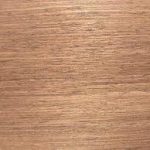
European Beech
European Beech is typically a pale cream color, sometimes with a pink or brown hue. Veneer tends to be slightly darker colored, as slicing the veneer usually requires the wood to be prepared with steam, which gives the wood a more golden tone. Flatsawn surfaces tend to be very plain, while quartersawn surfaces exhibit a silvery fleck pattern. Beech is considered non-durable or perishable. It is also susceptible to insect attack. European Beech is widely available across Europe, and it very economically priced within its natural range.
Overall good workability. It machines well, and glues, finishes, and turns well. Beech also responds superbly to steam-bending. It does, however, have a large amount of movement in service, so movement and wood stability must be taken into account.
European Beech is considered non-durable or perishable. It is also susceptible to insect attack. Beech is widely available across Europe, and it very economically priced within its natural range.
Beech is an important and widely-used hardwood in Europe. Its hardness, wear-resistance, strength, and excellent bending capabilities—coupled with its low price—make this hardwood a mainstay for many European woodworkers. Depending on soil conditions, European Beech can grow to very large sizes, and wide, long lumber is commonly available for use.






![]() Moisture content : 8-12%
Moisture content : 8-12%
SIZE IN FEET : 8X4,7X4,6X4,8X3,7X3,6X3
THICKENSS IN MM : 6 MM,9 MM,12 MM,16 MM,19MM






















